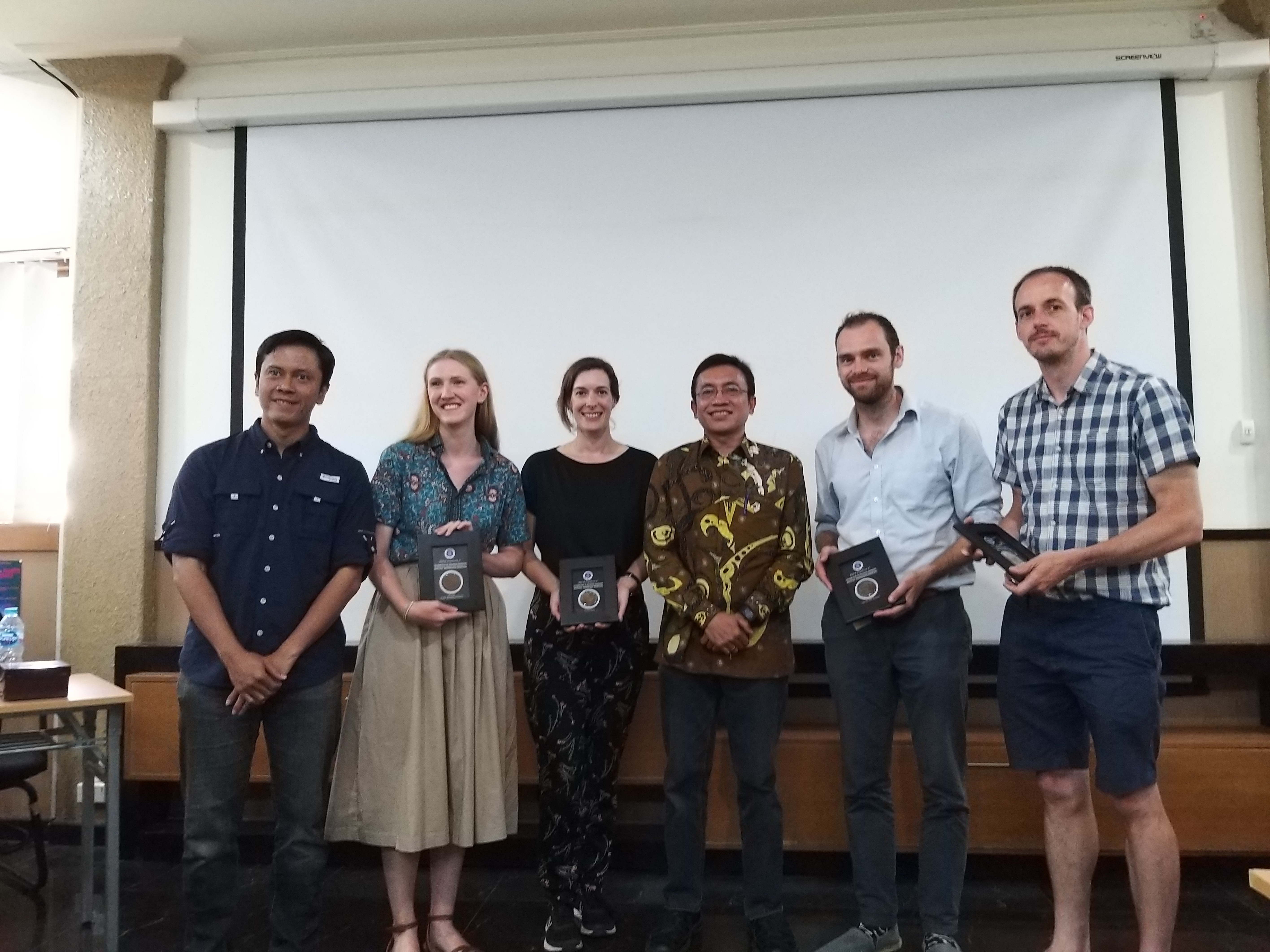Discussion on Volcanology and 2018 Tsunami of Anak Krakatau
By Adi Permana
Editor Adi Permana

BANDUNG, itb.ac.id – Institut Teknologi Bandung held a discussion on volcanology and tsunami on Monday (8/12/2019). The idea is based on the eruption of Children of Krakatoa in 2018, which is suspected as one of the triggers of Tsunami in Anyer.
“Indonesia is a country that live along with threats of volcano eruptions and eartquakes. Hence, it is important to understand and learn about this problem be it from explorations or from practitioners,” said Mirzam Abdurrahman opening the discussion.
Four UK geologists, namely Sebastian Watt, Michael Cassidy, Amber L. Madden-Nadeau, and Samantha Engwell joined the discussion. They currently conduct joint exploration with ITB’s Geological Engineering at Anak Krakatau in early 2019.
Mirzam said that the discussion aims to enrich the knowledge on the occurrence, which means it should be able to describe the situation when the eruption occurred. The geologists conduct the research to reconstruct the event when Anak Krakatau eruption and the impact to Tsunami in Anyer.
Reconstruction of volcanic events, especially those correlate with tsunami potential, will be a crucial knowledge. It is important not only to understand the impact of volcanic eruption near waters, but also to determine the location of minerals useful for human inside sediments or on surrounding land.
Discussion started with a presentation from Watt, who explained about the tsunami which is rumored to be affected by eruption of Krakatau in 1883 and Anak Krakatau in 2018 by finding out similarities between the two occurrences. The similarities mentioned are specific to the locations of shaking and collapsing soil that suffer from deformation. This can be referred to decide whether the collapse triggers vibration to ocean and cause tsunami or not.
Cassidy and Amber focus to explain the impact of eruption to soil collapse. They want to find out the process that happened to collapsing soil in that time by using geochemistry approach. “It is difficult to directly use geophysics approach because of insufficient data and physical observation, even more so in 1883,” Cassidy said.
Lastly, a presentation from Engwell who explained that the event of Krakatau in 1883 can use mathematical approach. “This is more feasible because of technological limits we had that time and hence we do not have sufficient data to create a visualized model,” Engwell said.
From their explanation, agreement is reached that the research is not over and absolute conclusion is not formulated. Further study at laboratory will be conducted to test specific aspects. From the test result, they will be able to reach a conclusion or change the methodology. After the presentation, discussion was open for 3 sessions of questions.
Reporter: Ferio Brahmana (Engineering Physics 2017)
Four UK geologists, namely Sebastian Watt, Michael Cassidy, Amber L. Madden-Nadeau, and Samantha Engwell joined the discussion. They currently conduct joint exploration with ITB’s Geological Engineering at Anak Krakatau in early 2019.
Mirzam said that the discussion aims to enrich the knowledge on the occurrence, which means it should be able to describe the situation when the eruption occurred. The geologists conduct the research to reconstruct the event when Anak Krakatau eruption and the impact to Tsunami in Anyer.
Reconstruction of volcanic events, especially those correlate with tsunami potential, will be a crucial knowledge. It is important not only to understand the impact of volcanic eruption near waters, but also to determine the location of minerals useful for human inside sediments or on surrounding land.
Discussion started with a presentation from Watt, who explained about the tsunami which is rumored to be affected by eruption of Krakatau in 1883 and Anak Krakatau in 2018 by finding out similarities between the two occurrences. The similarities mentioned are specific to the locations of shaking and collapsing soil that suffer from deformation. This can be referred to decide whether the collapse triggers vibration to ocean and cause tsunami or not.
Cassidy and Amber focus to explain the impact of eruption to soil collapse. They want to find out the process that happened to collapsing soil in that time by using geochemistry approach. “It is difficult to directly use geophysics approach because of insufficient data and physical observation, even more so in 1883,” Cassidy said.
Lastly, a presentation from Engwell who explained that the event of Krakatau in 1883 can use mathematical approach. “This is more feasible because of technological limits we had that time and hence we do not have sufficient data to create a visualized model,” Engwell said.
From their explanation, agreement is reached that the research is not over and absolute conclusion is not formulated. Further study at laboratory will be conducted to test specific aspects. From the test result, they will be able to reach a conclusion or change the methodology. After the presentation, discussion was open for 3 sessions of questions.
Reporter: Ferio Brahmana (Engineering Physics 2017)

.jpg)
.jpg)
.jpg)
.jpg)
.jpg)
